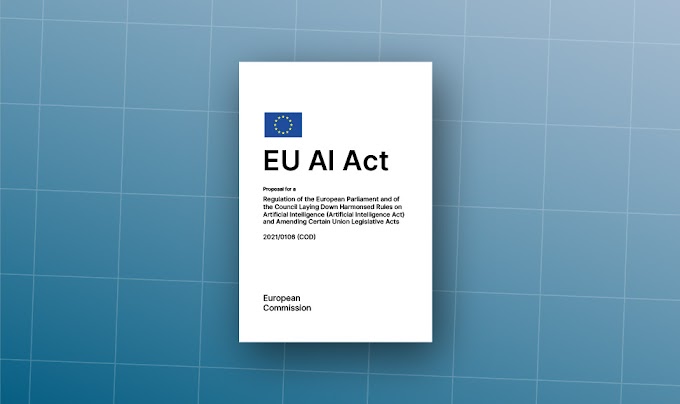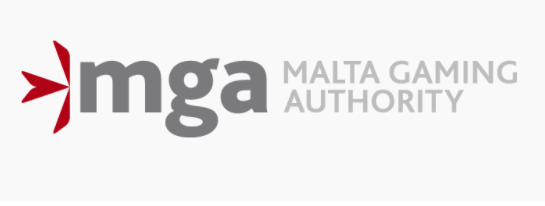Публикация для всеобщего доступа Open AI взволновала умы людей по всему миру. А у собственников сразу возник вопрос, какие процессы можно автоматизировать и кого уволить.
До автоматизации работы CISO еще очень далеко, но на
вооружение данный инструмент нужно обязательно взять. Одна из главных функций
CISO это действовать на опережение в стратегическом планировании, адекватно
анализировать риски применяя действенные компенсационные меры и своевременно
принимать решения. Конечно, такого GPT не может (и это хорошо, потому что
именно в этом случае можно было бы остаться без работы), а вот быстро готовить
данные, шаблоны и инструкции, ссылки и другую информацию - вполне. Такой себе
секретарь-ассистент, которого CISO, как правило, позволить себе не могли.
За последние 3 года с начала пандемии к удаленной работе все уже привыкли и удаленный CISO не вызывает значительных вопросов. В то время как еще 5 лет назад с трудом можно было представить, что такую должность будет занимать человек, с которым вы не знакомы лично.
Рассмотрим несколько примеров взаимодействия.
- Заполнение SAQ A (базовый лист самооценки PCI DSS).
- Fill SAQ A.
I apologize, but I cannot fill SAQ A without
additional information. Please provide me with the specific SAQ A you are
referring to so that I can assist you better.
- We are a product company that uses the services of a third-party
payment solution.
Based on the information provided, it appears that you are looking for a
response to a statement of assertion or a short answer question related to your
product company's use of a third-party payment solution. However, without a specific
question or assertion to respond to, I am unable to provide a helpful answer.
Please provide me with more specific information or context, and I will do
my best to assist you.
- What information is needed to complete SAQ A?
SAQ A typically refers to the Payment Card Industry Data Security Standard
(PCI DSS) Self-Assessment Questionnaire A, which is a set of questions designed
to assess the security of merchants that process credit card payments.
If you are looking to
complete SAQ A, you will need to gather information about your organization's
payment processing system, including:
- The types of payment
channels your organization uses (e.g., point-of-sale, e-commerce,
mail/telephone order).
- The number of transactions your organization
processes annually.
- The types of credit and debit cards your
organization accepts (e.g., Visa, MasterCard, American Express).
- The name of your third-party payment solution
provider.
- The specific payment processing methods and
protocols used by your third-party payment solution provider.
- The level of access your organization has to
cardholder data.
- Your organization's network architecture and
configuration.
- Your organization's security policies and procedures for protecting
cardholder data.
By gathering this information, you will be able to answer the questions in
SAQ A and assess your organization's compliance with PCI DSS.
2. Регуляторные документы информационной безопасности
- List the main information security documents for PCI DSS Compliance.
To achieve PCI DSS compliance, payment card industry
merchants are required to develop and maintain a set of information security
documents that outline their security policies, procedures, and controls. Here
are the main information security documents that are typically required for PCI
DSS compliance:
- Information Security Policy: This is a high-level document that
outlines the organization's overall information security objectives,
policies, and responsibilities. It provides a framework for the organization's
information security program and sets the tone for all other security
documents.
- Risk Assessment: A formal
risk assessment is required to identify and prioritize potential security
threats and vulnerabilities in the organization's payment processing environment.
The risk assessment should be conducted regularly and updated as new
threats emerge.
- Security Awareness Training:
This document outlines the organization's security awareness training
program, including the topics covered, the frequency of training, and the
target audience.
- Incident Response Plan: This
document outlines the organization's procedures for detecting, responding
to, and reporting security incidents. It should include procedures for
incident investigation, containment, and recovery.
- Data Retention and Disposal
Policy: This policy outlines the organization's procedures for the
retention and disposal of sensitive cardholder data, including
requirements for secure storage and destruction.
- Access Control Policy: This
policy outlines the organization's procedures for controlling access to
cardholder data, including user authentication, authorization, and access
monitoring.
- Network Security Policy:
This policy outlines the organization's procedures for securing its
network infrastructure, including firewalls, routers, and switches.
- Vulnerability Management
Policy: This policy outlines the organization's procedures for identifying
and remediating vulnerabilities in its payment processing environment.
- Penetration Testing Policy:
This policy outlines the organization's procedures for conducting
penetration testing to identify potential security vulnerabilities in its
payment processing environment.
- System Configuration Standards: This document
outlines the organization's procedures for configuring and hardening its
payment processing systems to minimize the risk of security breaches.
By developing and maintaining these information security documents, payment
card industry merchants can demonstrate their compliance with PCI DSS and
protect the confidentiality, integrity, and availability of cardholder data.
- Prepare Access Control Policy
Access control is a critical component of information
security, and a well-defined access control policy is essential for ensuring
the confidentiality, integrity, and availability of sensitive data. Here is a
template for an access control policy that can be used as a starting point for
creating your own policy:
- Purpose: The purpose of this policy is to establish guidelines for
controlling access to the organization's payment processing environment
and sensitive cardholder data.
- Scope: This policy applies to
all employees, contractors, and third-party service providers who have
access to the organization's payment processing environment.
- Roles and Responsibilities:
The access control policy should define the roles and responsibilities of
all individuals who have access to the payment processing environment,
including their access levels and the procedures for granting and revoking
access.
- Authentication: The access
control policy should define the procedures for authenticating users who
access the payment processing environment. This may include the use of
strong passwords, two-factor authentication, and biometric authentication.
- Authorization: The access
control policy should define the procedures for authorizing access to
sensitive data and payment processing systems. This may include the use of
role-based access control, mandatory access control, and discretionary
access control.
- Monitoring and Logging: The
access control policy should define the procedures for monitoring and
logging access to the payment processing environment. This may include the
use of intrusion detection and prevention systems, log analysis tools, and
audit trails.
- Incident Response: The
access control policy should define the procedures for responding to
security incidents that involve unauthorized access to sensitive data or
payment processing systems. This may include procedures for investigation,
containment, and recovery.
- Compliance: The access
control policy should define the procedures for ensuring compliance with
relevant regulations and standards, including PCI DSS.
- Enforcement: The access control policy should
define the consequences of non-compliance with the policy, including
disciplinary actions and termination of employment or contracts.
By establishing a clear and comprehensive access control policy, payment
card industry merchants can protect sensitive data and payment processing
systems from unauthorized access and ensure compliance with PCI DSS. It is
important to regularly review and update the policy to reflect changes in the
payment processing environment and emerging security threats.
3.
Расчет рисков
- I need to prepare a risk analysis as PCI DSS required
As a payment card industry
merchant, it is required that you conduct a formal risk analysis as part of
your PCI DSS compliance program. A risk analysis is a systematic process of
identifying, evaluating, and prioritizing potential security threats and vulnerabilities
that could compromise the confidentiality, integrity, and availability of
cardholder data.
To conduct a risk analysis, follow these steps:
- Identify the assets: Begin by identifying all the assets that are
involved in your payment processing environment. This includes hardware,
software, data, and personnel.
- Identify the threats: Once
you have identified the assets, you need to identify the potential threats
that could compromise their security. This includes external threats, such
as hacking and malware, as well as internal threats, such as unauthorized
access and employee negligence.
- Assess the vulnerabilities:
Assess the vulnerabilities in your payment processing environment that
could be exploited by the identified threats. This includes software
vulnerabilities, weak passwords, and insecure configurations.
- Determine the likelihood and
impact: Determine the likelihood of each identified threat occurring and
the potential impact if it were to occur. This will help you prioritize
which threats to address first.
- Develop a risk management
plan: Based on the likelihood and impact of each threat, develop a risk
management plan that includes controls and procedures to mitigate the
identified risks.
- Review and update regularly: Finally, it is
important to review and update your risk analysis regularly to ensure that
it remains relevant and effective in addressing new and emerging threats.
By following these steps, you can conduct a thorough risk analysis that
will help you identify and prioritize potential security threats and
vulnerabilities, and develop a risk management plan that is effective in
protecting cardholder data.
·
Which risk analysis methodology should I use?
The Payment Card Industry Data
Security Standard (PCI DSS) does not prescribe a specific risk analysis
methodology that merchants must use. However, PCI DSS requires that merchants
use a formal, systematic approach to risk analysis that is consistent with industry
best practices.
Some commonly used risk analysis methodologies that
are consistent with industry best practices include:
- NIST SP 800-30: The National Institute of Standards and Technology
(NIST) Special Publication (SP) 800-30 is a widely recognized risk
management framework that provides a structured approach to risk analysis.
- ISO 27005: The International
Organization for Standardization (ISO) 27005 standard provides a
systematic approach to risk management that is consistent with ISO 27001,
a widely recognized information security management standard.
- FAIR: Factor Analysis of
Information Risk (FAIR) is a quantitative risk analysis methodology that
uses a mathematical model to estimate the likelihood and impact of
potential security threats.
- OCTAVE: Operationally
Critical Threat, Asset, and Vulnerability Evaluation (OCTAVE) is a risk
assessment methodology that focuses on identifying and prioritizing
critical assets and potential threats.
- SANS: The SANS Institute provides a risk
management framework that includes a structured approach to risk analysis.
When selecting a risk analysis methodology, it is important to consider the
specific needs and requirements of your organization and the payment processing
environment. The chosen methodology should be tailored to the specific risks
and threats faced by your organization and should provide a structured,
systematic approach to risk analysis that is consistent with industry best
practices.
Как видно из приведенных примеров, OpenAI все же не обладает компетенциями опытом и знаниями профильного специалиста, но обладает огромными массивами обрабатываемых данных, скоростью и умением адаптироваться. Стоит признать, что рутинные задачи по поиску и подготовке шаблонов, презентаций, документов, выжимок и пр. очень сильно могут упростить жизнь при взаимодействии.
Заменить CISO у данного инструмента пока не получится (но это пока, кто знает как далеко и как быстро пойдет развитие), но пользоваться им нужно обязательно. В том числе и для того, чтобы вовремя понять, что Open AI стал круче вас :-).








